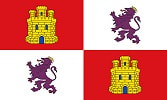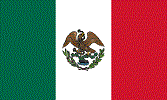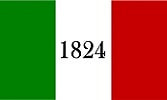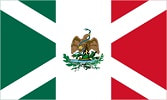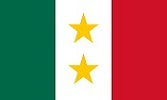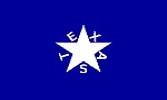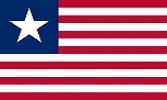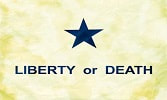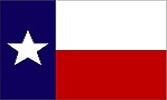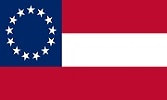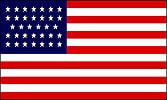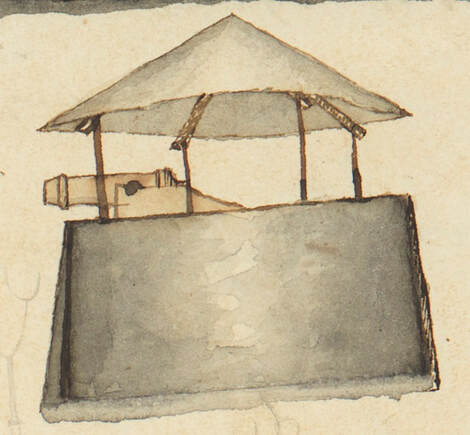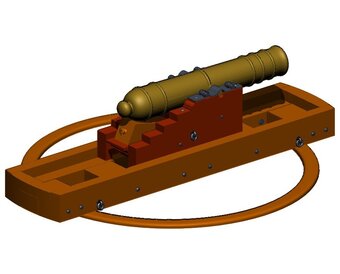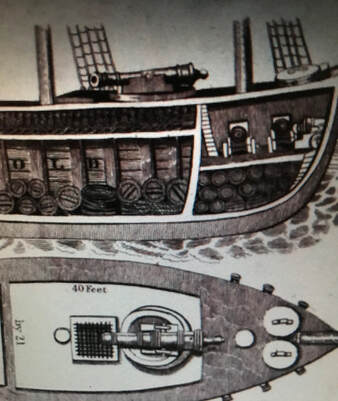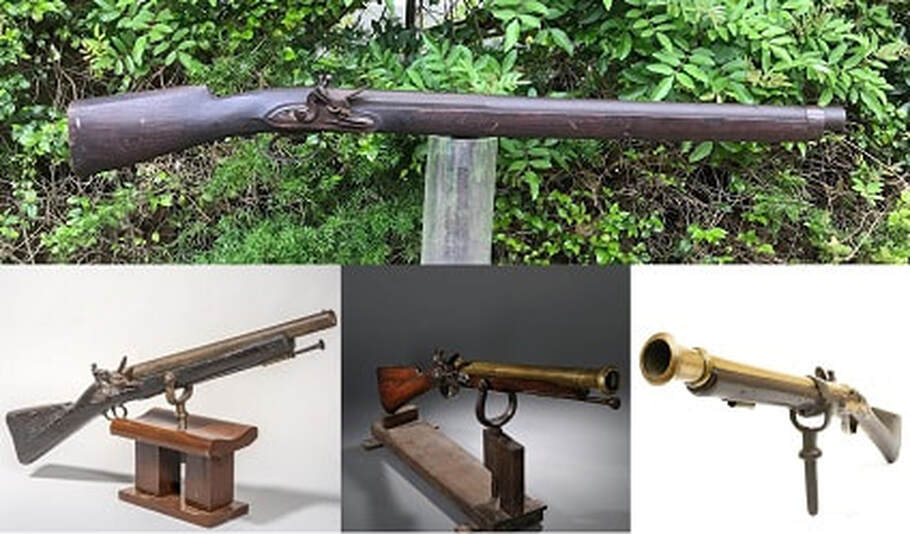Weapons at the Battle of Velasco - 1832
The specific size of the bastion’s cannon at Fort Velasco is not perfectly clear, since several sizes were mentioned in various references, including 6-, 8-, 9- and long 9-pounder cannon. But, among the first-hand accounts, only two sizes are mentioned - a “Cannon of 8” (in Ugartechea’s letters) or 8-pound cannon (in John Austin’s inventory of arms returned to Mexia), and a long 9-pounder (in the accounts by Henry Smith and William J. Russell, or the Breedlove inventory, which is a term for a smallish piece of naval artillery, typically having a bore of 4.2” and using a ball of 4.1” diameter). An example is shown in the image below, for a long 8-pounder.
The specific size of the bastion’s cannon at Fort Velasco is not perfectly clear, since several sizes were mentioned in various references, including 6-, 8-, 9- and long 9-pounder cannon. But, among the first-hand accounts, only two sizes are mentioned - a “Cannon of 8” (in Ugartechea’s letters) or 8-pound cannon (in John Austin’s inventory of arms returned to Mexia), and a long 9-pounder (in the accounts by Henry Smith and William J. Russell, or the Breedlove inventory, which is a term for a smallish piece of naval artillery, typically having a bore of 4.2” and using a ball of 4.1” diameter). An example is shown in the image below, for a long 8-pounder.
|
The French-designed 8-livre cannon had a ball that weighed 8.633 English pounds, so these may all refer to the same or similar cannon. It may be important to note that Ugartechea NEVER used the word “pound” in any of his descriptions, although George Fisher mentioned an "8-pounder" in an English letter from Anahuac. Additional secondary Texas references repeat the cannon size as 9- or long-9 pounds. The mention of a “cannon of 6” is found in an early letter of Ugartechea while still preparing at Anahuac (13-Mar-1832), and is interpreted as “six-pound cannon” in the Bradburn biography by Margaret Swett Henson; however, this may not have been the cannon he eventually took to Velasco, since he left Anahuac about a month later, and this description can be discounted in favor of the many later mentions of 8 to 9 pounds.
Research has revealed that a popular coastal fortification in Europe of the era was known as a Martello tower [George Nelson personal communication], typically equipped with a single naval cannon on a standard wooden carriage, but atop a rotating frame secured to a central pole or pivot (at the rear of the frame) to aim in any direction. Indeed, if the 1822 Austin drawing is scrutinized closely, there is a detail that looks very similar to this arrangement (see image to the right). Thus, the concept of a Martello tower did appear known to professionally-trained soldiers of the Mexican army in this period, and likely that a crude but working version of a pivot-mounted cannon was constructed at Fort Velasco. |
|
Another version for the mount of the bastion's cannon was suggested by diagrams of a rotating carriage, and this type was reported used in ships of the Texas Navy, or other ships of the era (images to the left). The upper image is courtesy of the Brazoria County Historical Museum, and lower image is courtesy of George Nelson. In contrast, the swivel gun’s size is only mentioned as 4-ounces among first-hand accounts, where Ugartechea mentions it's size (twice) in his after-report. Henry Smith, in his account a few years later, does mention a “four pounder", and this seems to be the source of later references mentioning a 4-pound cannon. However, a 4-pound cannon has a 3” diameter bore, and was probably too heavy for such a use. The authors of “The Texians” used instead a description of a two-inch ball for the swivel gun. The U. S. Army 1862 Ordnance Manual defines a 4-ounce cast-iron shot as being 1.231 inches diameter, and calculations confirm this size of cast-iron shot does indeed weigh right at 4 ounces. We conclude that the weapon was probably an iron-barreled muzzle-loading weapon (similar to a “wall gun”) but something less than a small cannon, something like that shown in the images below, but we are uncertain of the exact configuration. |
A narrative report that discusses all of the research on
the several Forts Velasco is available at the link below:
<<< The Battle of Velasco < click for other pages > What was "Monument Square"? >>>
Background wallpaper is from 1834 version of "Map of the State of Coahuila and Texas" by William Hooker of New York
Background wallpaper is from 1834 version of "Map of the State of Coahuila and Texas" by William Hooker of New York
